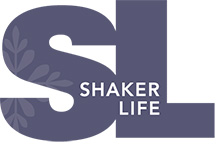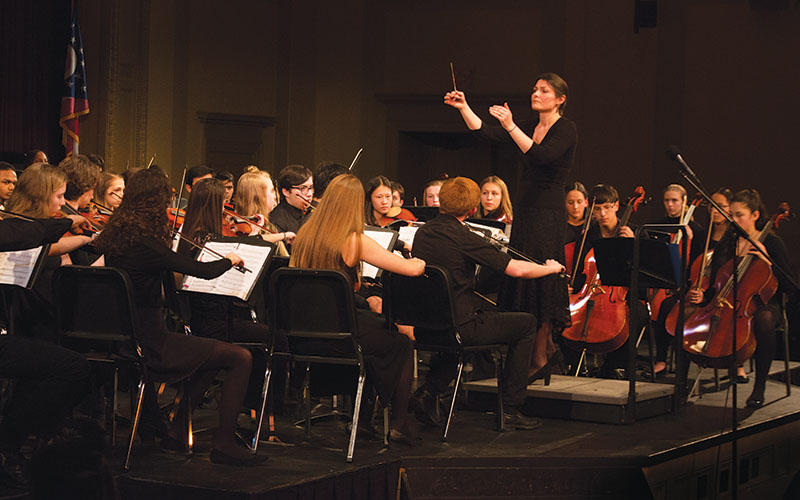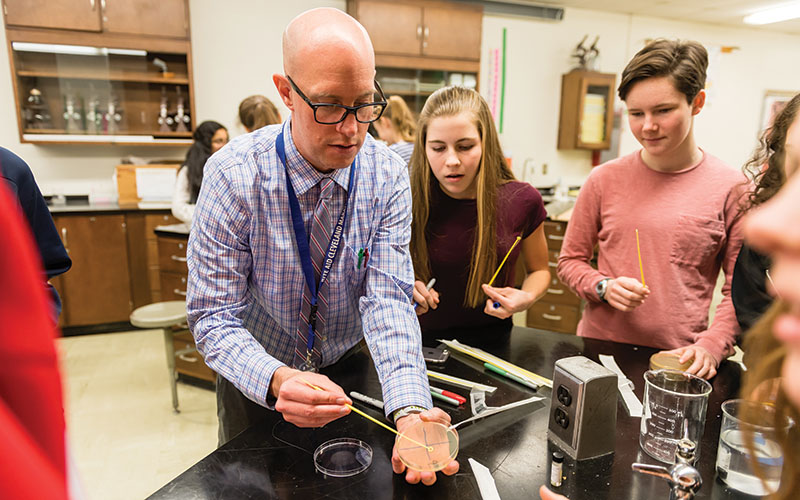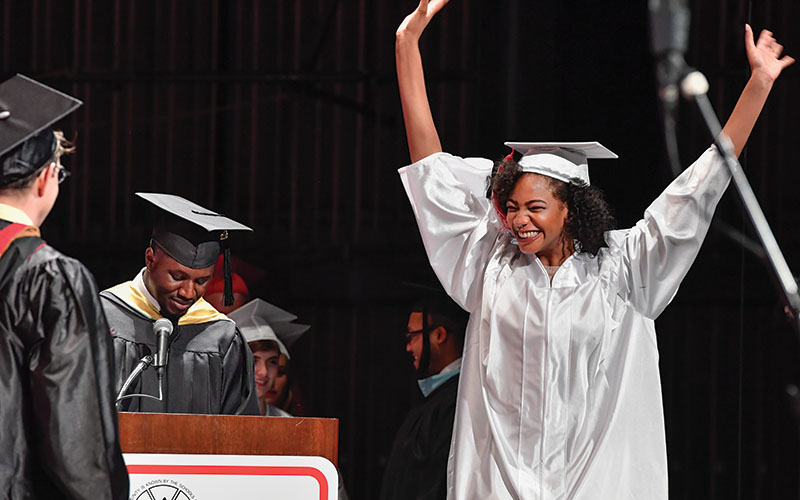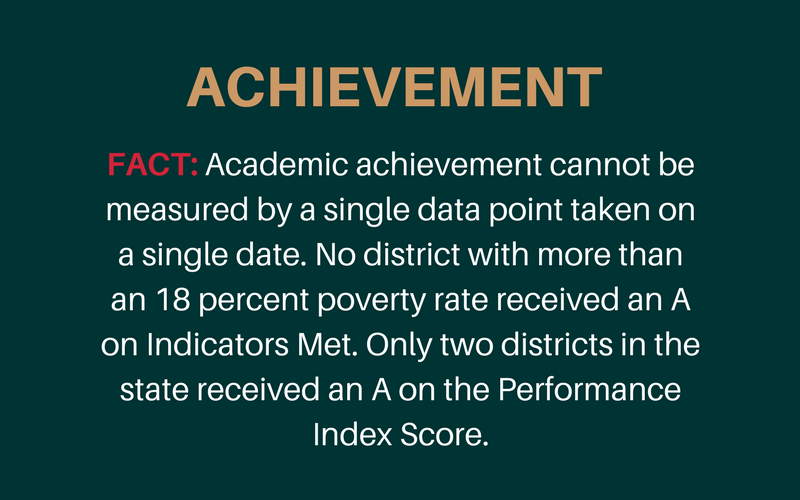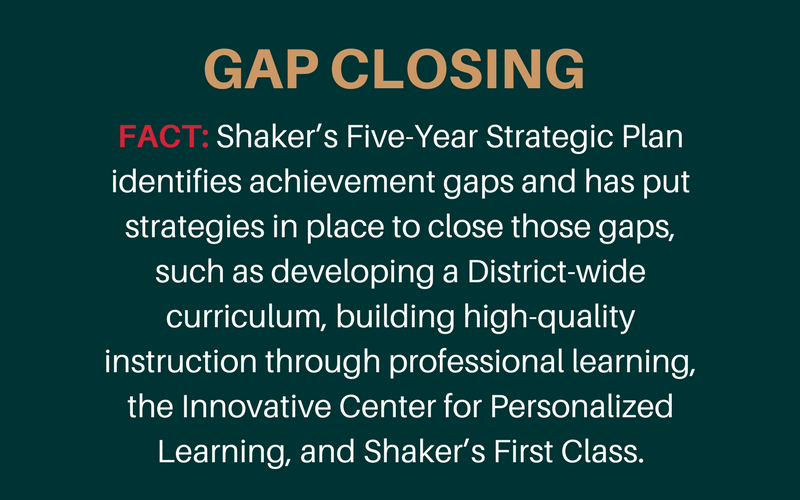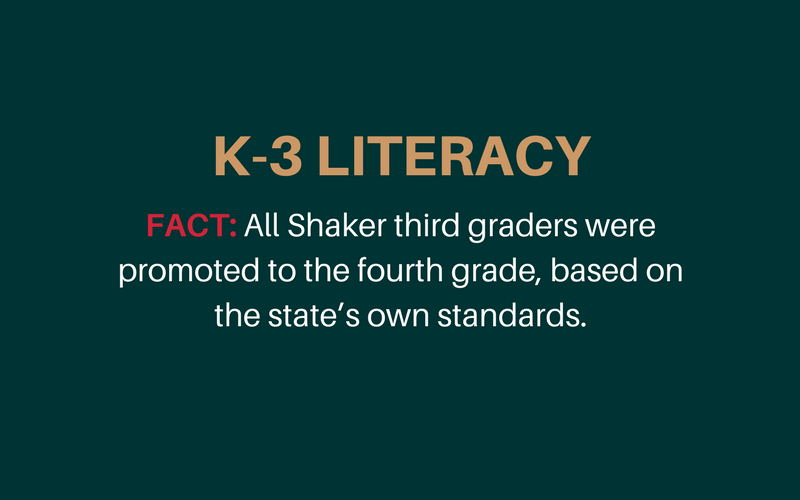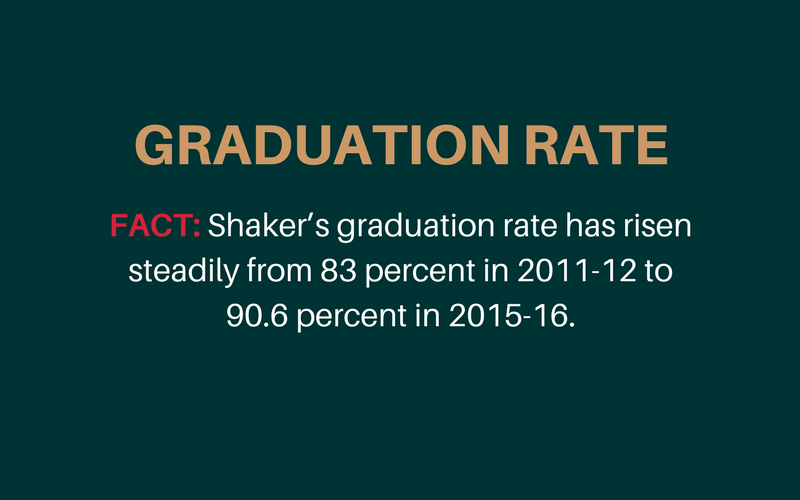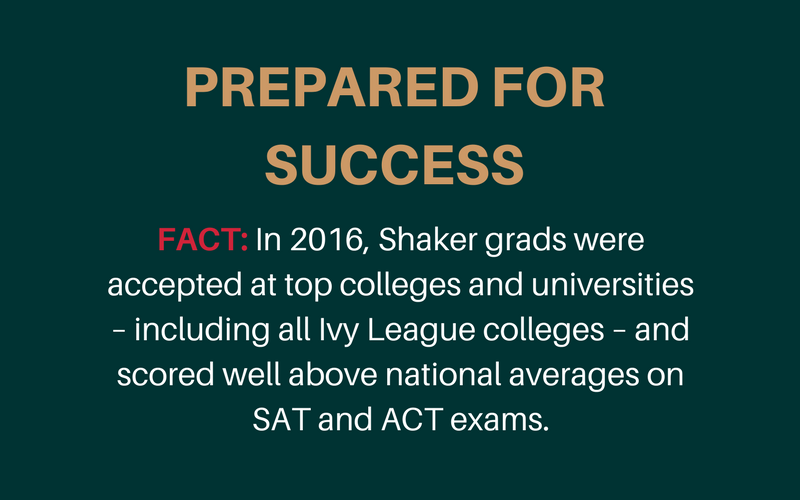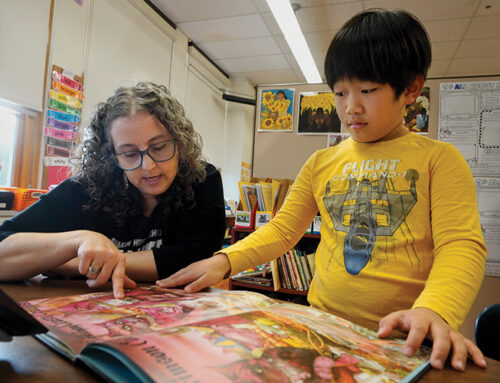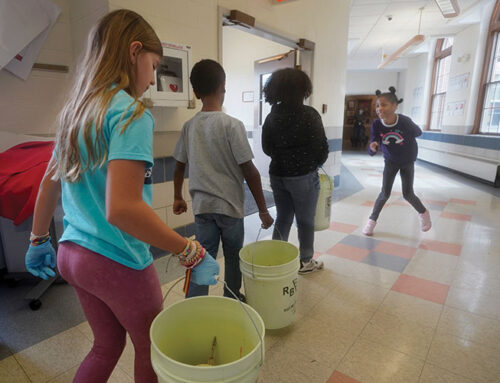A Shaker Heights Schools education has never been better. You wouldn’t know it from the State Report Card.
By Scott Stephens
For the Shaker Schools, these are the good old days.
The District, a beacon of educational excellence for more than a century, continues to raise the bar for student success. Shaker’s graduation rate is on the rise, and the achievement gap among groups of students is narrowing. ACT and SAT scores remain significantly above state and national averages. Last year, Shaker grads were accepted at every Ivy League school.
Shaker is one of just eight districts in North America to embed the prestigious International Baccalaureate at every grade level, and the District offers more advanced courses than any area school system. All elementary students are taught to speak Mandarin Chinese. Shaker students dominate competitions for the most elite scholarships, including Presidential, Gates Millennium, and National Merit scholarships.
Academics aren’t the only area in which Shaker students excel. The marching band, the state’s largest, has appeared in concerts from China to Spain. The Chamber Orchestra was one of a handful of high school ensembles to appear at Lincoln Center in New York City. Routinely, Shaker students dominate regional art, drawing, and photography exhibitions. The student newspaper, The Shakerite, continues to garner state and national journalism awards. Last year, two Pulitzer Prize winners were Shaker Heights High School graduates.
But the rich, well-rounded education Shaker’s families value doesn’t translate well to the State Report Card, the Ohio Department of Education’s annual statistical analysis of how the state’s 610 school districts are performing. That contradiction is frustrating to Shaker administrators, teachers, parents, and civic leaders, who find themselves defending the District against mediocre report card “grades.”
“The Shaker Schools have made significant gains in the past 10 years, especially in the past three years,” said Dr. Gregory C. Hutchings, Jr., who at the time of this article was Superintendent of Schools. “It’s very clear that a Shaker education provides students an educational environment that prepares them for the real world. Unfortunately, the State Report Card doesn’t capture that excellence.”
Much of the disconnect stems from the fact that Ohio’s report cards are based on standardized tests, a single data point taken each spring. Research shows that standardized tests track closely with a district’s level of poverty. About a third of Shaker’s students are identified as coming from low-income households, based on federal free and reduced lunch standards. While poverty should not be used as an excuse for academic failure, educators agree poverty is a significant barrier to successful learning. Shaker, however, is working diligently to minimize and remove that barrier.
An analysis conducted last fall by Kyle Newton, superintendent of the Warren Local School District, seems to drive home that point. Using state data, Newton found that no school with more than an 18 percent poverty rate received an “A” on Indicators Met. In Ohio, 524 school districts and 83 percent of the schools have poverty rates that exceed 18 percent. Only two districts in the state received an “A” on the Performance Index Score. One of those districts has a zero percent poverty rate; the other has a poverty rate of nine percent. None of the 100 poorest schools, based on property valuation, received above a “D” or an “F” on Indicators Met.
“Testing doesn’t measure intelligence, it measures wealth,” says State Board of Education member Meryl Johnson, whose district includes Shaker Heights. “We know good things are happening in our schools, and the State Report Card does not reflect that. It’s driving the public away from our public schools, and I think that’s dangerous and unfair.”
Strength in Diversity
John Morris, a high school English teacher and president of the Shaker Heights Teachers Association, said the vast majority of teachers are deeply troubled by the State Report Card. Morris says teachers do not believe the grades represent the unique talents and abilities that their students possess.
“Many teachers find that the State Report Card favors districts with more homogeneous ethnic, racial, and socioeconomic school communities that teach more directly to tests and that do not value the diversity of student populations and educational experiences in the ways that Shaker does,” Morris says. “We know that diversity presents its challenges, but ultimately it represents the strength of our district. The State Report Card does not reflect this reality.”
Educators also complain that the test on which State Report Card grades are based has been changed for three consecutive years, as have the state’s learning objectives and benchmarks. Research shows that when a test is changed, scores almost always go down. Former State Board of Education member Roslyn Painter-Goffi says it is important to put the State Report Card in its proper context. Painter-Goffi, whose tenure on the state board ended last year, said the report card is “just one snapshot” of a school district’s performance and quality.
“Our whole testing system environment over the past three years has been in a state of flux,” Painter-Goffi told The Plain Dealer in September. “These endless changes make it difficult for districts to compare results from previous years. It is by no means the only indicator of how well a district is doing.”
State education officials acknowledge that the report card is complicated and – with many educators – unpopular. When current report cards were released last fall, Paulo DeMaria, Superintendent of Public Instruction, needed a 32-slide PowerPoint to explain how the document worked.
“There will likely be a lot of frustration expressed as a result of this release,” DeMaria said at the time. “It’s difficult when schools are working hard and seeing improvement locally but not yet seeing that growth reflected on the State Report Cards.”
Some superintendents fear the nuances of the measurements are lost on some of the general public, many of whom use the document to assess whether to move to a community and purchase a home.
“It’s our most public document,” says Linda Reid, superintendent of the South Euclid Lyndhurst School District. “It’s what Zillow and real estate agents look at. That’s our reality.”
True Accountability
Virtually all educators favor some kind of accountability system – they’re just not so sure that computer-based testing, the descendent of filling in bubbles with a No. 2 pencil, is the best way to get there. The most popular alternative assessments include student portfolios, projects, performance-based assessments, observations, or self- and peer-evaluations. These kinds of assessments measure a student’s ability to think critically, solve problems, and work with others – skills the state itself identifies as essential for success in the global, 21st century workplace.
“I believe students should have some choice of how they demonstrate mastery of a subject,” Hutchings says.
Shaker monitors the progress of its students three times a year through the Measures of Academic Progress (MAP), which adapts to each student’s learning level and precisely measures student progress and growth for each individual.
“MAP is a tool that is not bound by political whims,” said Dr. Terri L. Breeden, Shaker’s Assistant Superintendent for Curriculum and Instruction. “It doesn’t just give you a number, but instead gives you a personalized prescription of next steps for each child.” Last year, a Shaker Schools Task Force of the Every Student Succeeds Act (ESSA), the new federal education law, recommended that the state use multiple measures, rather than a single standardized test, for report cards for schools and districts. It also recommended that districts accredited in research-based programs with high standards – such as Shaker’s International Baccalaureate framework – should be eligible for waivers in some state accountability measures.
The District is also in the third year of a Five-Year Strategic Plan that covers all areas of District work, including academics. As part of that plan, the District last fall established its own set of metrics designed to improve teaching and learning in every classroom. “Accountability is fine, but there also needs to be some way the State Report Card records what the good districts are doing,” says Johnson, a teacher for 40 years before being elected to the State Board of Education. “As it is now, it’s causing parents and the community to lose faith in our schools.”
How Does Shaker Measure Up? A Comparison Of Area High Schools
| Shaker | Beachwood | Chagrin | Orange | Solon | |
|---|---|---|---|---|---|
|
AP Scholars |
84 | 39 | * | 62 | 220 |
|
AP Scholars |
37 | 12 | * | 20 | 55 |
|
Presidential |
1 | 0 | 0 | 0 | 0 |
|
National Merit |
3 | 0 | 0 | 0 | 2 |
|
National Merit |
6 | 0 | 1 | 0 | 1 |
|
Gates Millennium |
1 | 0 | 0 | 0 | 0 |
|
Coca-Cola |
1 | 0 | 0 | 0 | 0 |
|
Number of |
29 | 23 | 22 | 22 | 27 |
|
SAT Average |
1804 | 1883 | 1762 | 1788 | 1791 |
|
IB Diploma |
YES | NO | NO | NO | NO |
|
Number of AP and |
66 | 27 | 23 | 22 | 23 |
* = Data recorded differently
